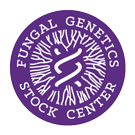Strain: Neurospora crassa
FGSC #6407
Reporting Genes: mus-9 nic-2
Species: crassa
Allele: FK129 43002
Alternate Strain Number: M2455
Depositor: EK
Linkage Group: IR R
Mating Type: A
Genetic Background: SL
Opposite Mating Type: 6408
ref1: Kafer and Luk, FGN 35, https://doi.org/10.4148/1941-4765.1525
ref2: https://doi.org/10.1016/0921-8777(89)90038-4
Genes
